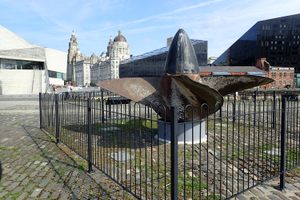
One of the most famous ships of World War I, the RMS Lusitania was a passenger liner sailing from New York to Liverpool when it was attacked without warning by a German U-boat off the southern coast of Ireland on May 7, 1915. After a second explosion, the Lusitania sunk within 18 minutes, killing 1,201 people. The attack sparked international outrage, especially in the United States, which was still neutral at the time. The attack would later be part of the justification for the U.S. joining the Allies in 1917.
Following World War I, several expeditions were undertaken to locate the shipwreck, and it was finally discovered in 1935. In 1957, it was bought by John Light, who intended to salvage materials from the ship. To secure funding, Light entered a financial partnership with businessman George Macomber and corporate executive and Gregg Bemis. However, little progress was made for decades.
In 1982, Bemis became the sole owner of the wreck. By this time, he had developed an intense interest in the Lusitania and believed conspiracy theories suggesting the ship had been carrying munitions, which might explain the second explosion after the torpedo strike. He hoped to retrieve parts of the ship for examination.
That same year, Bemis hired Oceaneering International to help salvage items from the Lusitania, including three of the ship’s propellers. The Merseyside Maritime Museum, in Liverpool, acquired one of the propellers in 1989. Another went on display outside the Hilton Anatole in Dallas, Texas, while the third was melted down to make commemorative golf clubs.
The Maritime Museum’s propeller now sits in the historic waterfront area outside the Museum of Liverpool, just north of the Maritime Museum’s location within Royal Albert Dock. Every year on May 7, a commemorative service is held at the propeller to honor the victims of the tragedy.















